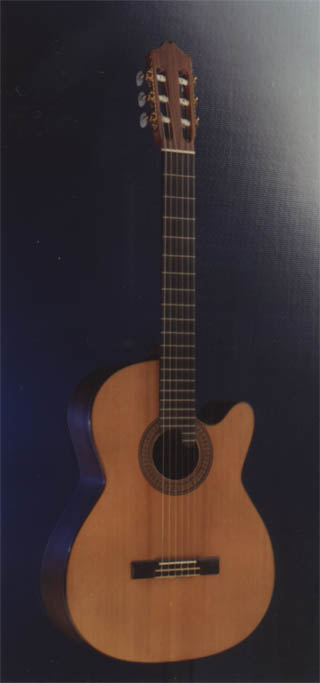The Classical Guitar

(Image reproduced courtesy of Gilet Guitars)
This is an example of a cutaway classical guitar. The 'cutaway' refers to the indentation where the neck meets the body, so that higher playing positions are easily facilitated.
The closest member of the guitar family to the traditional stringed orchestral instruments, the classical guitar was only taken seriously as a concert instrument as recently as the 1920's. Since then it has grown in repute although it is still not widely used in symphonic ensembles.
The sounds produced by this type of guitar are often described as 'soft' and 'mellow'. Purists consider it an offence to play a classical guitar with anything but (well-manicured) fingers only!
The classical guitar distinguishes itself from the other guitars in the following ways:
- The body is noticeably more rounded than the other guitars, looking a lot more like the guitar's predecessors.
- The fingerboard meets the body at the 12th fret (halfway along the string*)
- Much wider fingerboard (~60mm at the body.)
- Top three strings** nylon, then bottom three sliver-plated copper wire wrapped around a silken fibre core.
- Usually has a symmetrical strut bracing geometry.
* Not exactly halfway; there is a small correction factor to take pitch sharpening into account as the string is depressed.
**Note that the "top" string is the highest sounding one (the thinnest one!) and actually is further down than any others when played in the standard right-handed way. |

